More Joint Sets, More Control: Introducing Multiple Joint Sets in RocSlope2
RocSlope2 is a powerful tool developed by Rocscience to help engineers assess the stability of rock slopes using 3D kinematic and block-based analysis. Built with practical engineering challenges in mind, it enables fast, reliable evaluation of wedge, planar, and toppling failures in a single platform – supporting safer designs and informed decisions across mining, infrastructure, and natural terrain projects.
In slope stability analysis, accurately representing joint systems is essential. Field conditions rarely involve a single discontinuity set; most rock masses contain multiple joint systems that interact in complex ways. While engineers could already model these interactions in RocSlope2, the latest update (v1.006) makes this process significantly more streamlined.
With enhancements that improve how joint sets are defined, managed, and imported, this update makes it easier to represent geologically realistic conditions – while saving time and resources throughout the modelling process. Whether you’re assessing slopes in mining operations, transportation corridors, or natural terrains, RocSlope2 now supports a faster and more intuitive workflow for incorporating multiple joint sets into your analysis.
Adding Multiple Joint Sets & Importing Joint Sets from Dips
Joint sets – groups of fractures or discontinuities in rock masses sharing similar orientations and characteristics – are the backbone of rock slope stability analysis. These features often dictate potential failure planes and play a critical role in determining how a slope will fail. In slope stability analysis, joint sets are incorporated to evaluate how discontinuities may facilitate sliding or toppling failures.
The latest enhancements to RocSlope2 simplify this process. Users can now define an unlimited number of joint sets, more easily assign distinct properties to each, and manage them individually – all within an intuitive, streamlined interface. This allows engineers to set up analyses more quickly, while maintaining full control over which joint sets are active in any given scenario.
The update also strengthens integration with Dips, enabling direct import of joint set data into RocSlope2, including full joint set structures and orientations, with minimal manual setup.
What’s New?
RocSlope2’s previous builds already had the capability of performing wedge, planar and toppling block analysis, considering joint orientations from a single joint set or two separate joint sets.
This latest update now allows RocSlope2 users to:
- Define an unlimited number of joint sets, each with independent orientation data, planar and toppling analysis settings.
- Easily import Joint Sets from a Dips file, enabling seamless import of Joint Sets defined in a Dips file into RocSlope2 as separate Joint Sets including their respective joint orientations.
- Selectively Include/Exclude Joint Sets from analysis, providing flexibility in selecting which joint sets and associated joint orientations to be considered in analysis.
This significantly expands joint modelling possibilities and enhances RocSlope2–Dips integration. Engineers can now selectively include or exclude each joint set from the analysis, allowing more flexibility in evaluating joint combinations and performing comprehensive set vs. set wedge stability analysis.
How the New Feature Works:
- Single Joint Set Behaviour:
By default, RocSlope2 considers a single joint set when performing block stability analyses.

- For wedge failure analysis, the software automatically carries out a Combination Analysis, evaluating all possible pairs of joints within the set to identify potential wedge-forming combinations.
- In the case of planar and toppling failures, RocSlope2 evaluates all joints that fall within the defined Sliding Lateral Limits and Toppling Lateral Limits, respectively.
2. Multiple Joint Set Behavior:
When multiple joint sets are defined in RocSlope2, the block formation logic adapts accordingly.
- In wedge analysis, the software evaluates all possible combinations of joints – selecting one joint from each defined set – to identify valid wedge-forming blocks.
- For planar and toppling failure modes, all joints across all defined sets that fall within the relevant Sliding or Toppling Lateral Limits are considered.
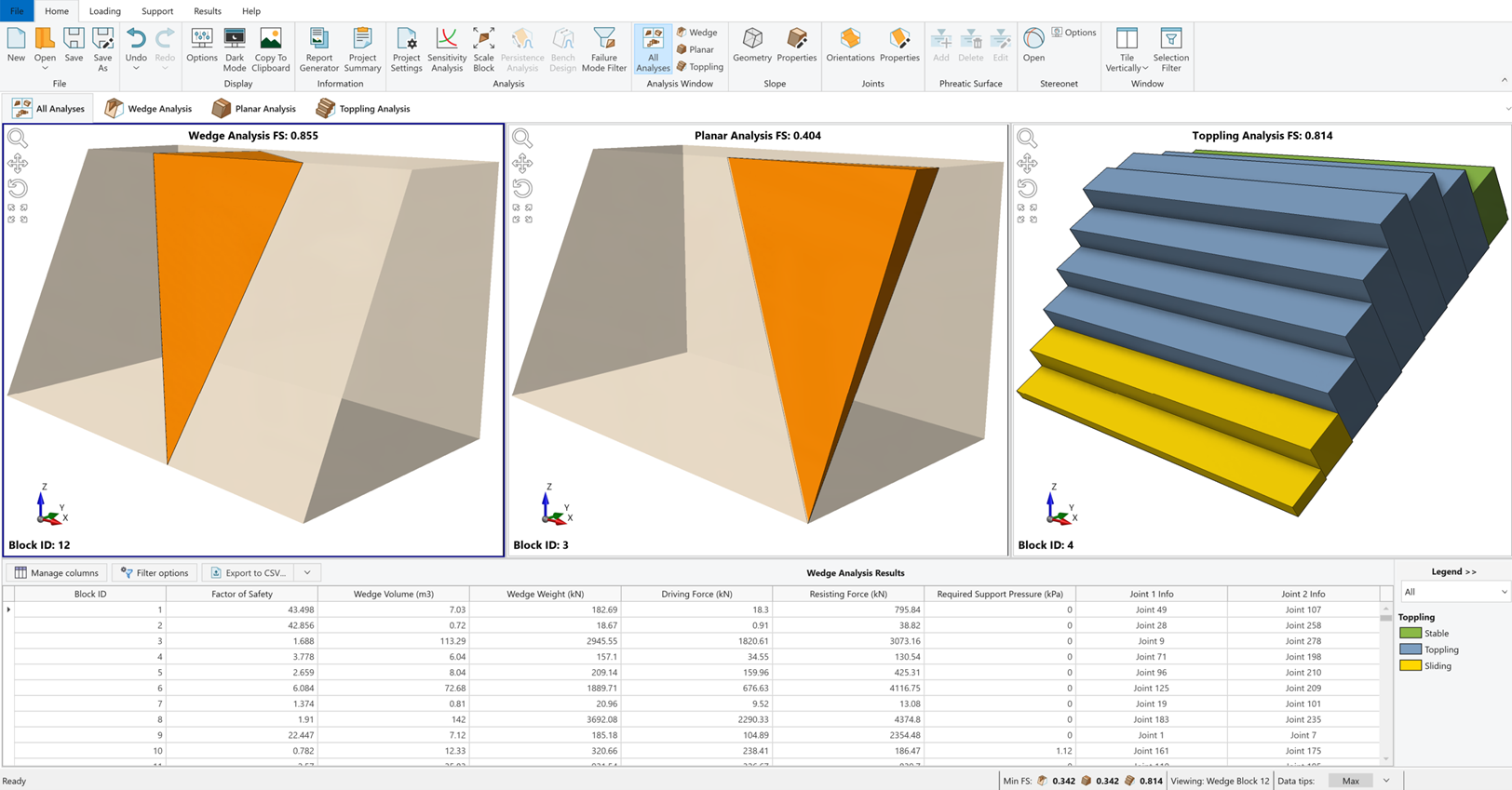
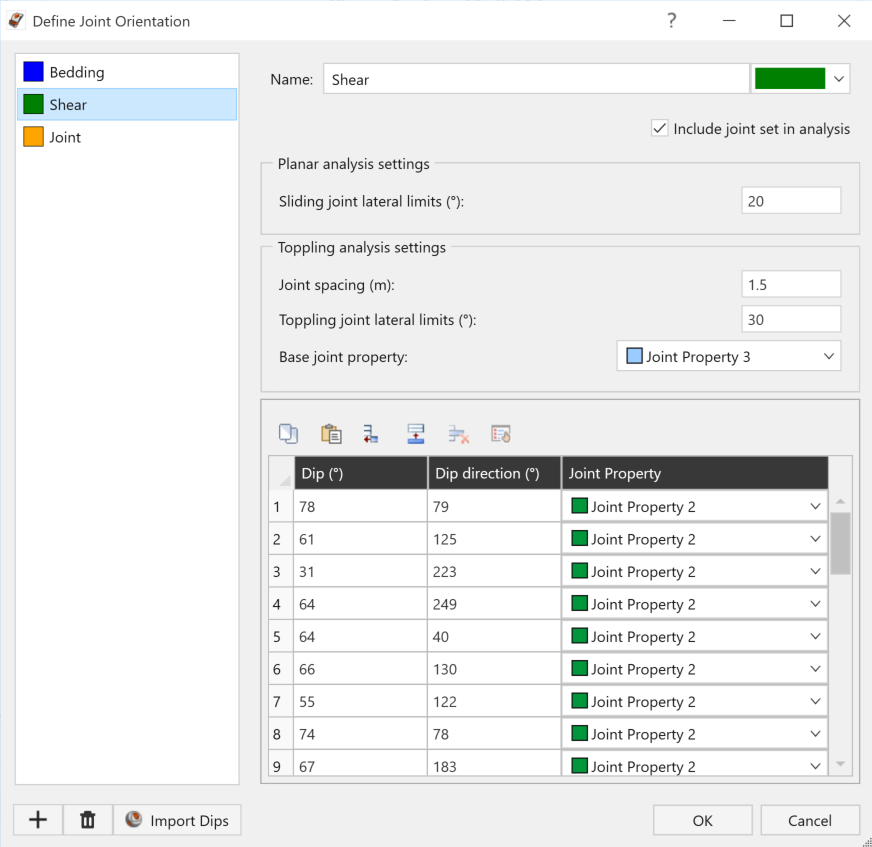
To support this, RocSlope2 makes it easy to manage joint sets directly from the Define Joint Orientations dialog:
- Add or delete joint sets using the Add Joint Set and Delete Joint Set buttons.
- Rename each joint set to reflect its geological role (e.g., bedding, shear, foliation) for easier identification and control.
- Assign individual joint orientations and analysis parameters to each set.
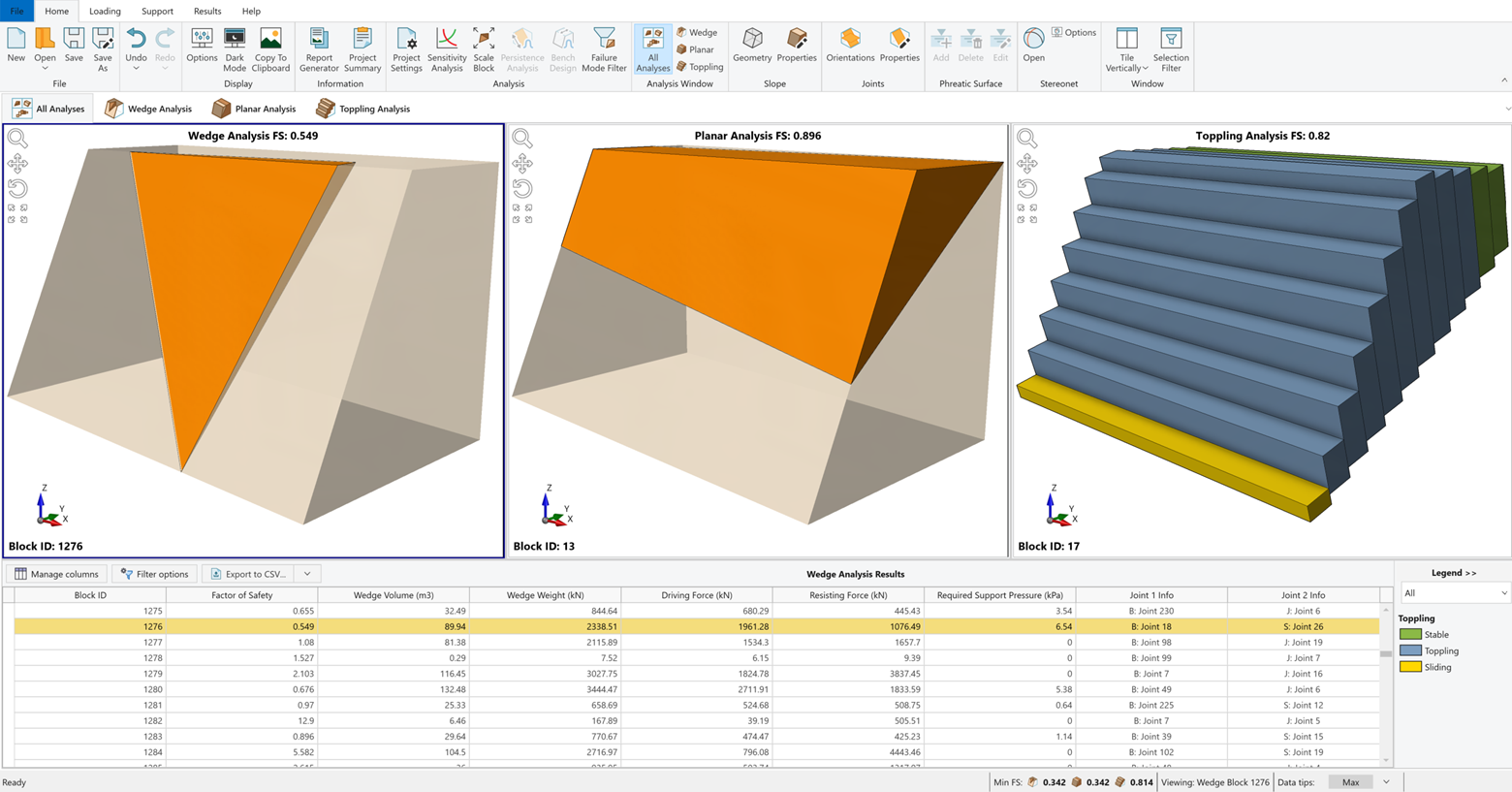
3. Including or Excluding Joint Sets:
You can control which joint sets are included in the analysis using the Include joint set in analysis checkbox in the Define Joint Orientations dialog. This gives you the flexibility to:
- Isolate the impact of specific structural features,
- Run targeted set vs. set wedge stability analyses, and
- Customize which discontinuities influence your slope stability results.
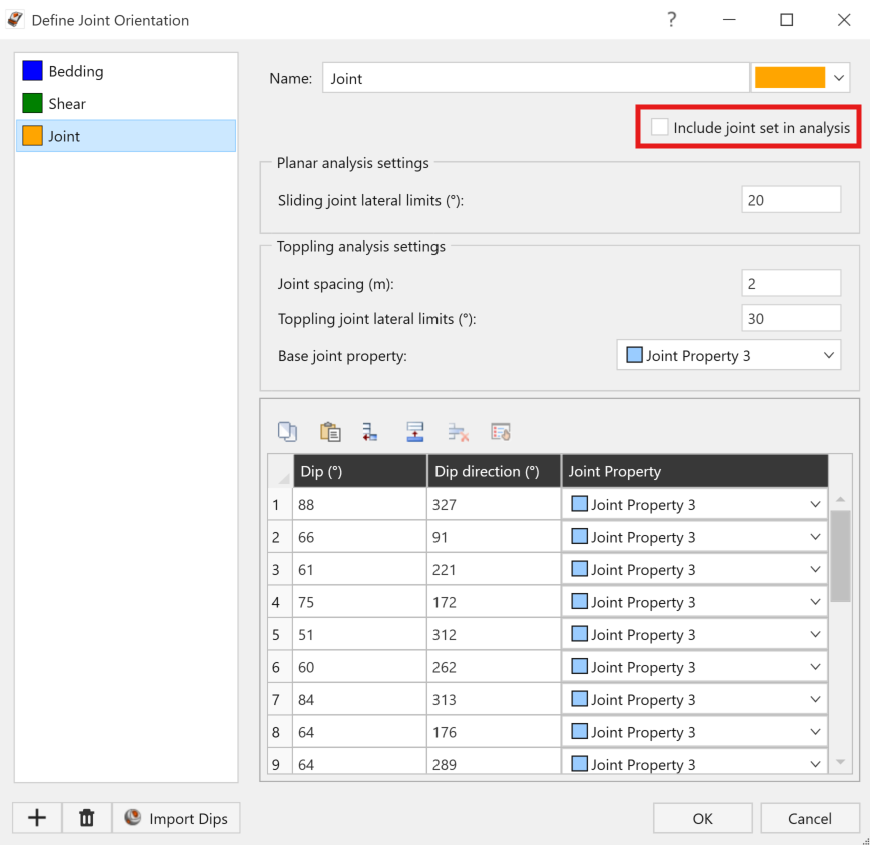
Additionally, when the Block Shape is set to Basal Joint, a Basal Joint Set will be automatically added to the joint sets list enabled for editing.
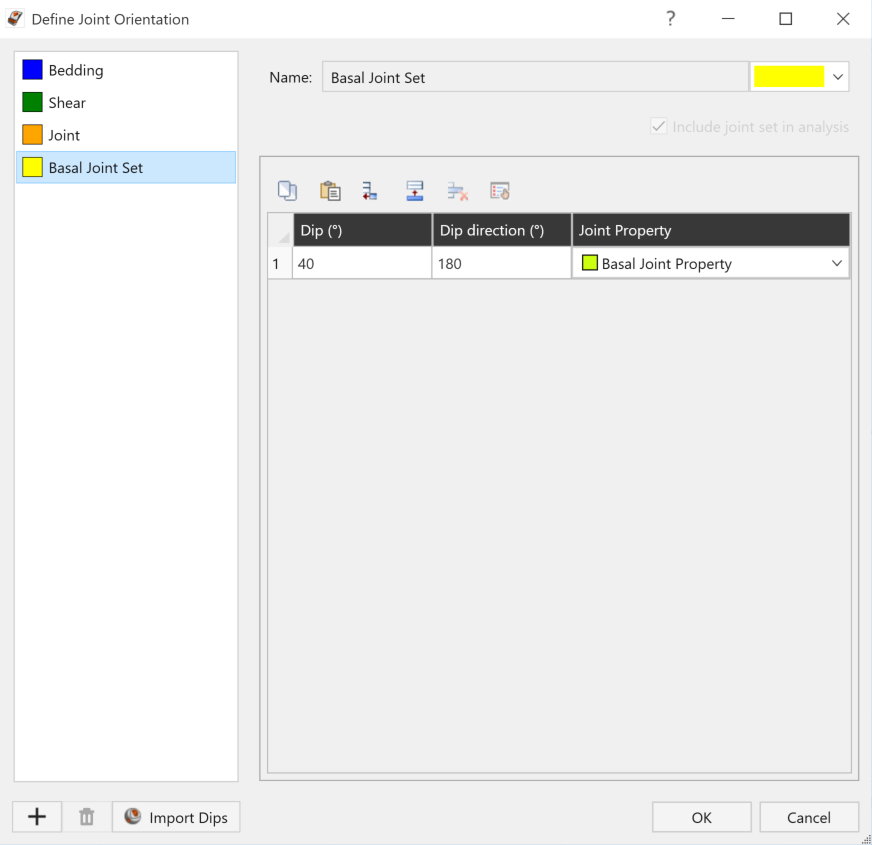
4. Enhanced Integration with Dips:
The improved integration with Dips simplifies the process of bringing joint orientation data into RocSlope2. Key options include:
- Preserve joint sets defined in Dips: Imports each set as a separate, editable group in RocSlope2.
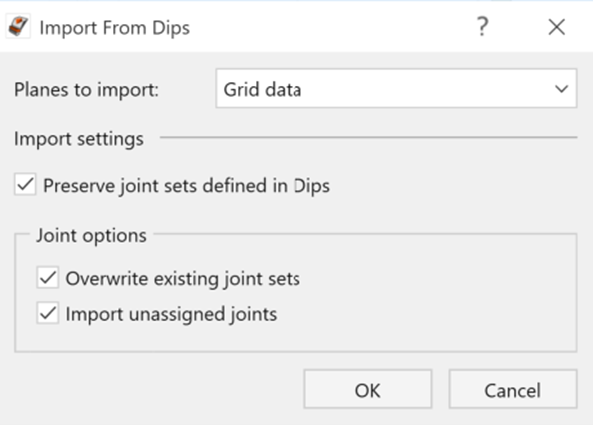
- Import unassigned joints: Places joints not tied to a set in Dips into a default group called Dips Joint Set Unassigned.
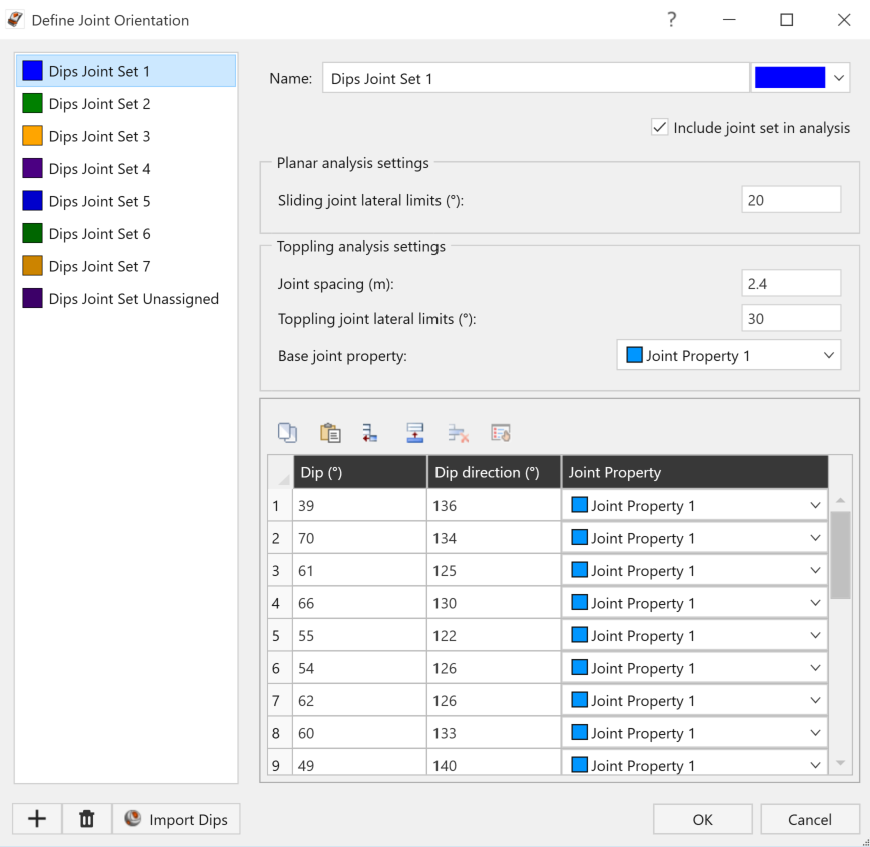
- If Preserve joint sets defined in Dips
checkbox is not selected, then we can select one predefined joint set from the Define Joint Orientation dialog to import all the Dips joint orientation data to.
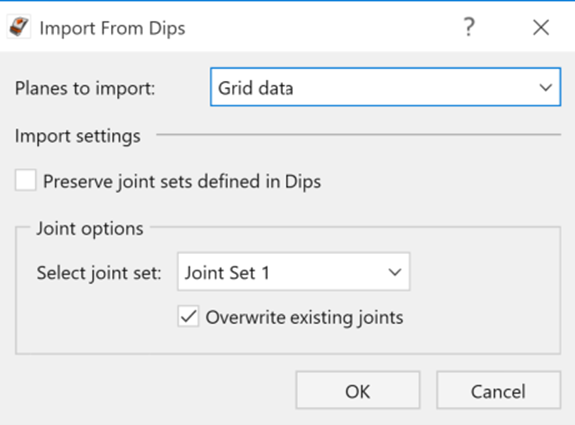
- In Stereonet View, joint pole fill colours correspond with the Joint Set colours applied in the Define Joint Orientations dialog as well.
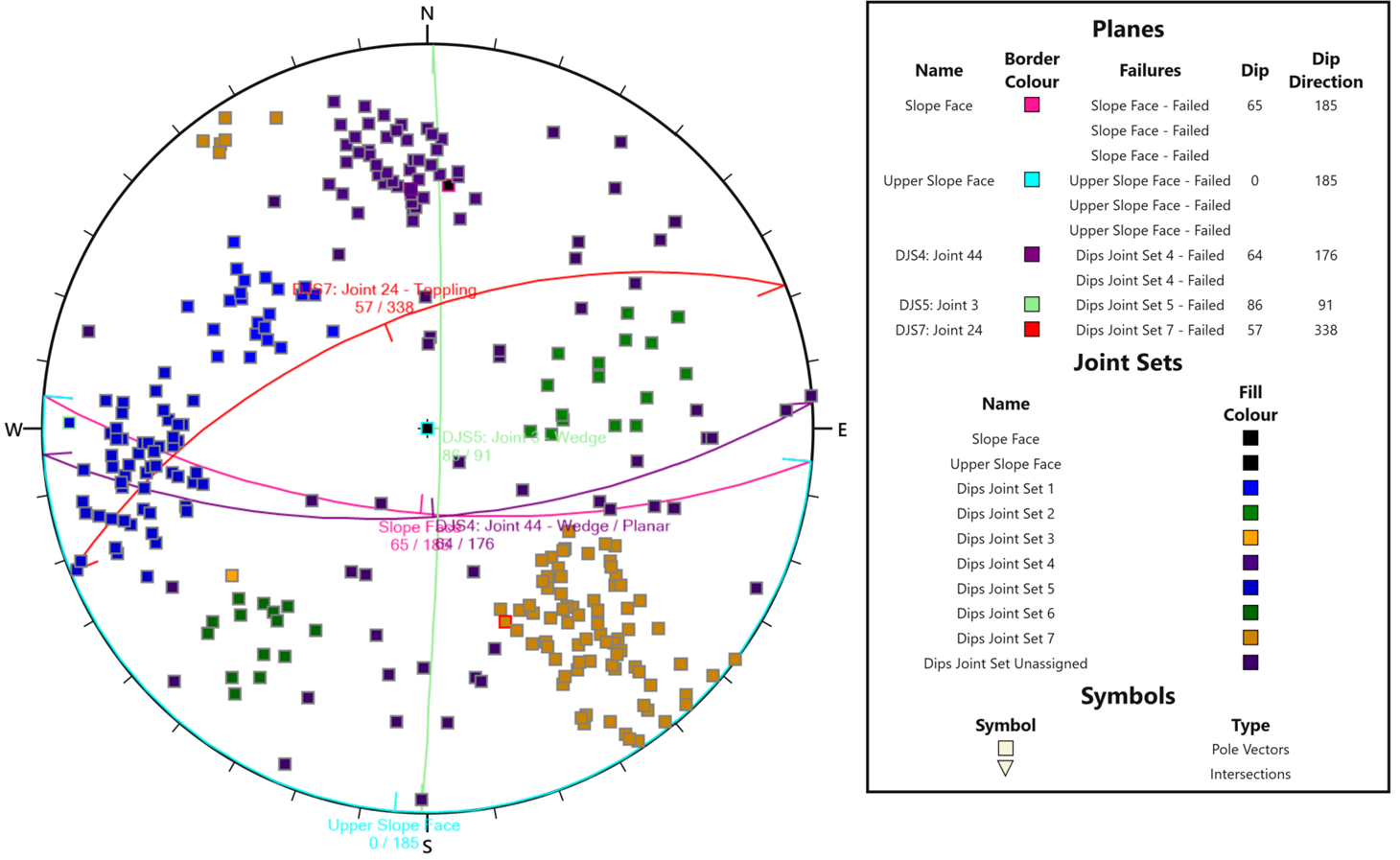
- If a Joint Set is excluded from the analysis, related joint poles are also excluded from the Stereonet View and legend.

Key Highlights of the New Adding Multiple Joint Sets Feature
- Define an unlimited number of joint sets, each with independent orientation, and planar and toppling analysis settings.
- Enhanced RocSlope2 – Dips integration.
- Import joint sets directly from a Dips file, with each set and its respective joint orientations automatically recognized and added as separate joint sets.
- Include or exclude joint sets from analysis to control which structural features influence slope stability results more.
- Enables advanced set vs. set wedge analysis.
- Improved flexibility to assign distinct joint properties to each joint set.
Next up: Smart Support Design with Fewer Iterations
Learn how RocSlope2’s new Intelligent Support Optimization feature automates the design of the most effective support configurations: saving time, minimizing resources, and improving safety margins. → Read the full breakdown of Feature 2
Ready to see how these enhancements can simplify your slope stability workflows?
Start Your Free Trial